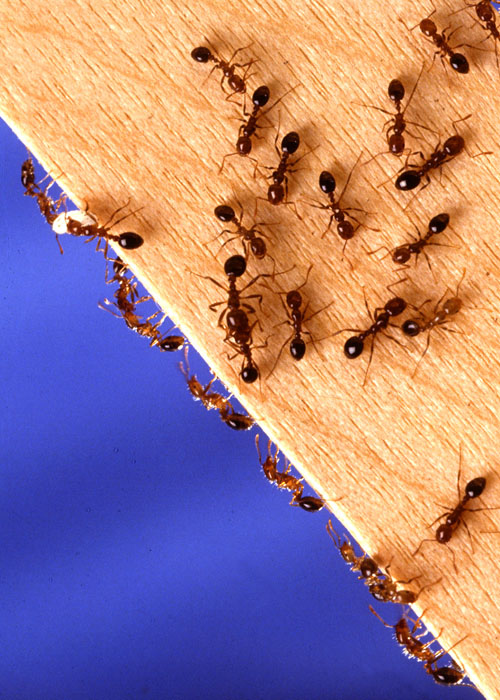Vegetable gardens and compost piles are usually located in the sunniest part of the landscape. Unfortunately, fire ants like sunshine as well. They often invade compost piles and vegetable gardens seeking food, warmth and moisture.
In the garden
Ants are usually of little or no concern to most vegetable plants, but during periods of hot, dry weather they will sometimes feed on select plants — either nibbling on okra buds and developing pods or even tunnel into potatoes.
Ants are considered beneficial insects that prey on garden pests like caterpillars. However, seeing ants on your plants may be a clue of another more serious insect problem — aphids.
Some ants protect other sap-feeding insects, like aphids, by keeping their natural enemies away. The ants then harvest honeydew from the aphids as a food source. This interaction between ants and aphids is known as a “symbiotic relationship.”
In the compost bin
Fire ants most often invade compost bins after someone abandons or neglects the composting process. Fire ants usually avoid places that are disturbed. A compost pile that is frequently turned won’t be attractive to these biting critters.
Ants in a compost pile can also be a sign that the pile is too dry. This can slow down the composting process. Compost piles stay hotter and are more productive when frequently turned and proper moisture levels are maintained. A compost pile that reaches higher temperatures in the early stages of composting may also discourage fire ants.
Removal
Once the ants become established in a garden or compost pile, it may be difficult to remove them. If they persist or become a nuisance, pour boiling water on the nest. Use extreme caution as this method can potentially be very dangerous to you and your garden plants. This rarely eradicates the colonies, but it may cause them to move to a new location.
As a last resort, use fire ant bait killer near — but not in — the compost pile or garden. Insecticides applied to a compost pile may kill other beneficial insects that are involved in the composting process. Avoid direct application of pesticides on the compost pile and follow the pesticide label's instructions.
Use pesticides labeled for the location or site you want to treat. For example, do not use a product in a vegetable garden unless the product is labeled for use in vegetable gardens.
Carbaryl, pyrethrins and spinosad are common insecticides labeled as safe for use in vegetable gardens. When the exact location of a fire ant colony is unknown, treat the area of greatest ant activity around the perimeter of your garden or compost pile with a fast-acting bait product containing hydramethylnon, abamectin, indoxacarb or spinosad. In time foraging ants both inside and outside the garden will collect the bait and take it to their colonies.
Removing fire ants from your garden and compost pile will protect you from being bitten.
For more information on fire ant control, see the University of Georgia Cooperative Extension publication “Controlling Fire Ants in Urban Areas” at www.caes.uga.edu/publications.








